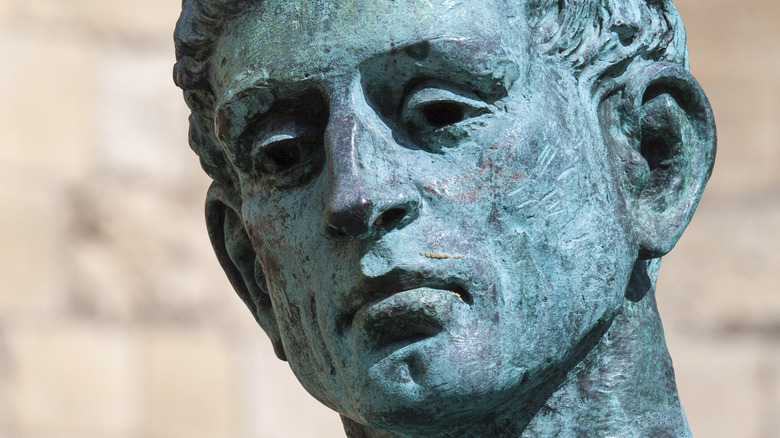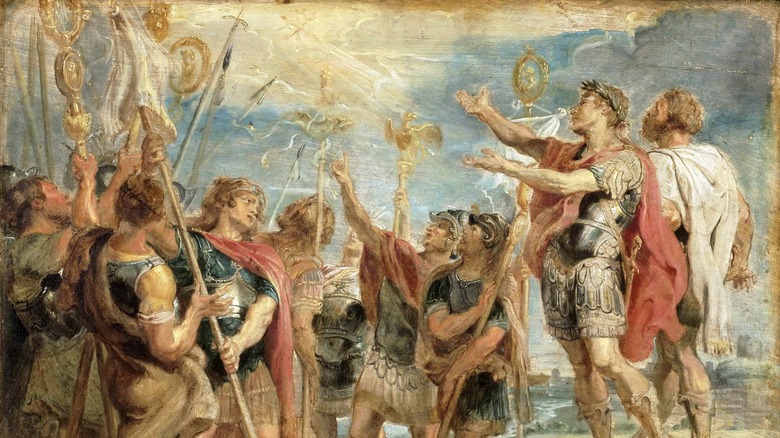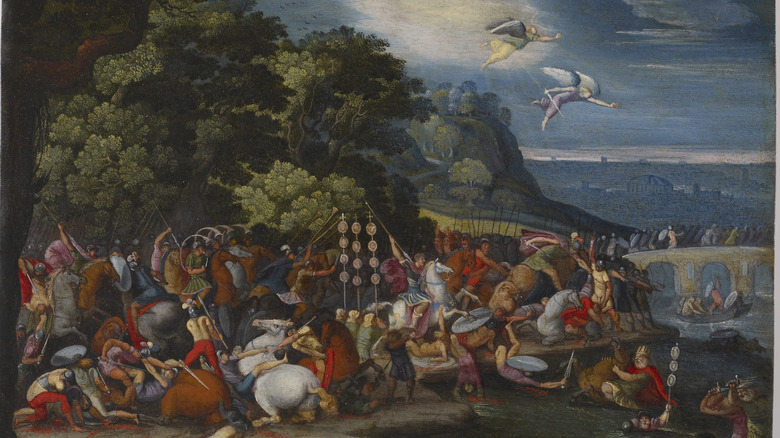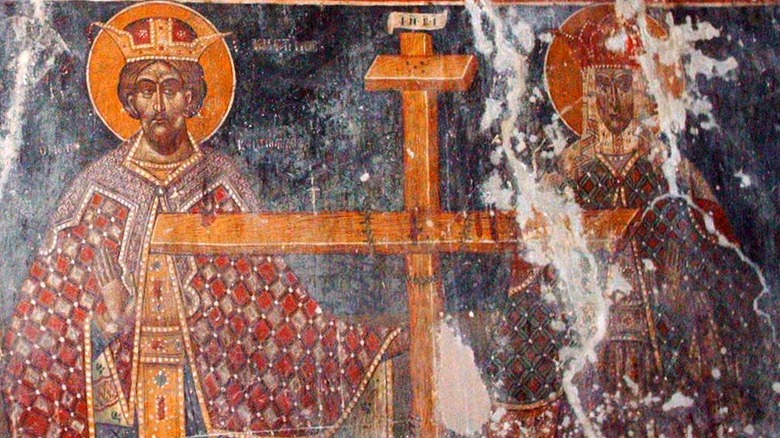How The Battle Of The Milvian Bridge Forever Changed The Roman Empire
At the beginning of the fourth century A.D., the Roman Empire had grown and spread far beyond the capacity of any one ruler to control. As the Encyclopedia Britannica explains, the empire had been split into Western and Eastern halves, each ruled by a primary emperor called an augustus, aided by a deputy emperor called a caesar. This era of imperial history is known as the Roman Tetrarchy after these four rulers, and it was introduced in the latter parts of the third century to try to quell the infighting over succession crises that had plagued the empire for decades.
In 305, power was peacefully transferred from the augusti Diocletian and Maximian to their respective caesares, Galerius and Constantius. However, Constantius died in battle in Britain in the following year, which led to the kind of succession crisis chaos that the tetrarchy was supposed to have eliminated. Constantius' soldiers in Britain proclaimed his son Constantine as the new augustus in his father's place, while back in Rome, the Senate and the extremely powerful Praetorian Guard hailed Maximian's son Maxentius as augustus. The ins and outs of it get kind of complicated from here, but after a few years of fighting and truces among the various fashions, the sudden death of Galerius in 311 threw the political situation into a chaos that finally brought tensions between Constantine and Maxentius to a head. In 312, the ambitious Constantine led his forces into Italy, conquering first Turin, then Milan, and then Verona, before arriving at Rome's Milvian Bridge.
Constantine's prophetic vision
Maxentius prepared to meet his rival in Rome, where he had cut off all access to the city in anticipation of Constantine's arrival, except for a temporary bridge Maxentius had built to cross the Tiber River and confront Constantine's forces. As the Encyclopedia Britannica says, Maxentius had consulted Rome's prophetic Sibylline Books, which predicted that a Roman enemy would fall that day. What Maxentius didn't know is that Constantine was bringing an all-new god with him.
As Classic History explains, the popular legend recounted by Christian historians Lactantius and Eusebius says that some time before Constantine's campaign against the city (the two authors differ on exactly when), Constantine received a dream or other vision of either a cross or a chi-rho (a symbol combining the first two letters of the word Christ in Greek) along with the Greek words "en toutoi nika" ("in this, conquer"; often popularly rendered in Latin as "in hoc signo vinces," or "in this sign, you will conquer"). While the historians say that Constantine did not fully understand the meaning of this vision, nevertheless he takes it as an omen from a powerful deity and has his soldiers all put the Christian symbol of the chi-rho on their shields. Maxentius, meanwhile, marched under the standard of Sol Invictus, the Unconquerable Sun. Constantine and his army — many of whom were themselves already Christian — won a decisive victory, with Maxentius' cavalry forced to retreat across the river and Maxentius himself falling from the bridge and drowning in his heavy armor.
Constantine reunites an empire
According to Classic History, Constantine didn't even know which god's symbol he had attached to his shields, he only knew that this god had won him a great victory, and he swore to worship no other god than him, who — as you might know — turned out to be the Christian God. But before devoting himself to learning more about the God who had made him now the undisputed master of the Western Empire, as the Encyclopedia Britannica explains, Constantine had Maxentius' body dragged from the Tiber, impaled his head on a spear, and had the mounted head sent as a warning to Maxentius' supporters.
Despite having finally defeated his most bitter rival, Constantine's campaign for power wasn't yet done. He moved into the lands held by the Eastern augustus Licinius and invaded in a series of battles that saw Licinius fall in 324, leaving Constantine the sole ruler of the entire Roman Empire, East and West. Constantine the Great, as he would be known, reunited the empire after decades of turbulence. However, despite his ascent to power having been confirmed at the gates of Rome, Constantine would decide to move the imperial capital to the city of Byzantium in Asia Minor, which he would rename Constantinople ("Constantine's city") after himself, although as you may have heard, it goes by Istanbul these days. Rome's new eastern capital would continue to stand even for a thousand years after the fall of Rome itself in the West, as what has retroactively been named the Byzantine Empire.
The rise of Christianity
But even more than reuniting a vast empire and relocating its capital, arguably Constantine's most significant impact was his conversion to Christianity following his victory at the Milvian Bridge. According to the Encyclopedia Britannica, one of Constantine's first moves after defeating Maxentius with — as he believed — the divine help of the Christian God, was the Edict of Milan of A.D. 313, which legalized Christianity across the Roman Empire. Prior to this edict, Christians had been widely persecuted under a number of Roman emperors, including somewhat famously Nero, Decius, and Diocletian. The Edict of Milan, however, proclaimed full religious tolerance for Christians as well as the restoration of any property that had been taken from them during the persecutions.
Constantine took on Christian bishops as advisors and educators in an attempt to better understand his new faith, and donated land and property to the bishop of Rome for a cathedral, beginning the Christian church's long and continuing connection to that city. In fact, the very first ecumenical council of the church – the Council of Nicaea– was convened by Constantine to address theological issues causing schisms within Christianity. The orthodox doctrine of the Trinity and the first official statement of faith were formulated there. While it was the later emperor Theodosius I (per Britannica) who declared Christianity the official religion of the Roman Empire, Constantine is certainly responsible for making it the favored religion of the empire, which contributed significantly to the spread of Christianity and the prevalence and influence it continues to enjoy to this day.



